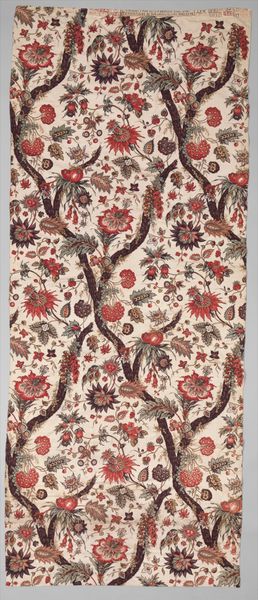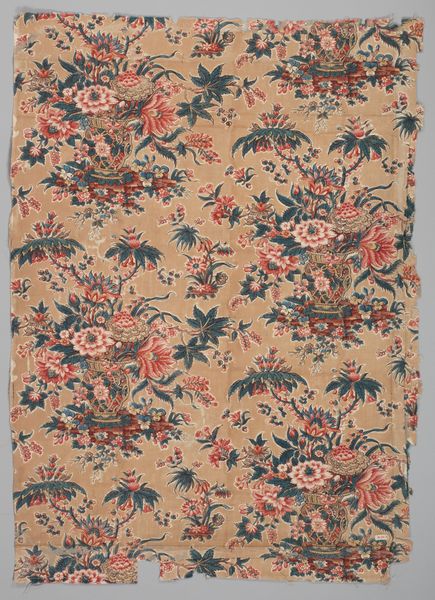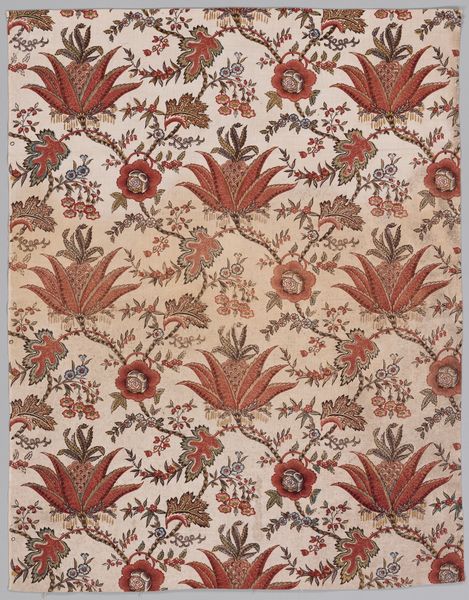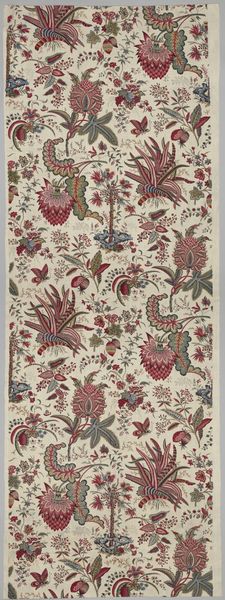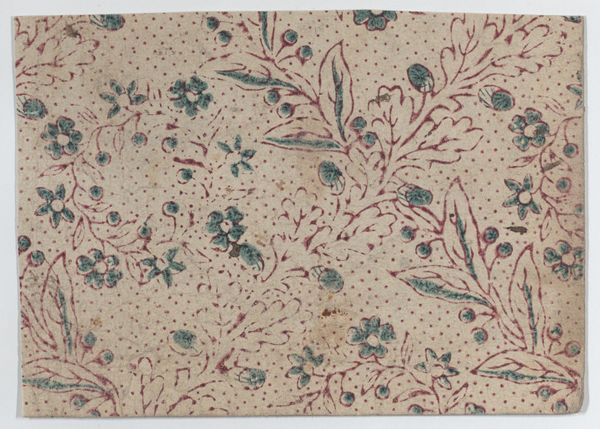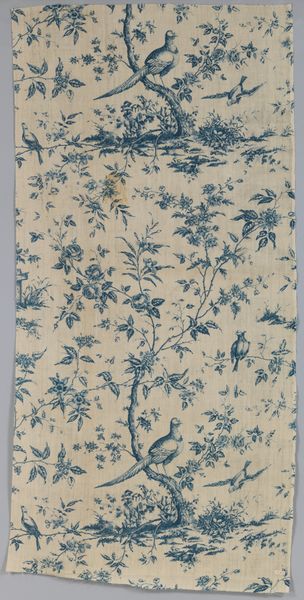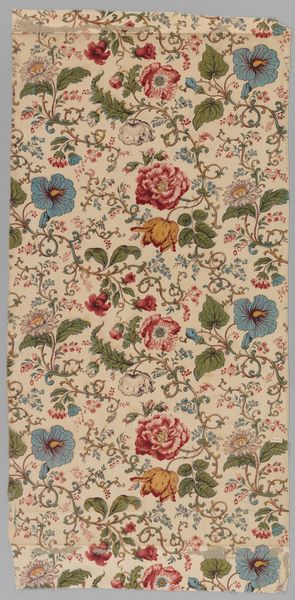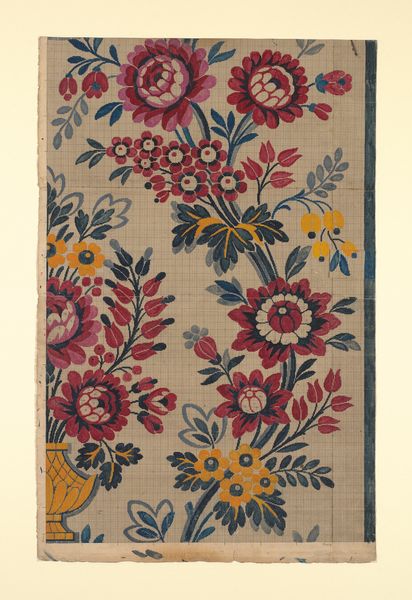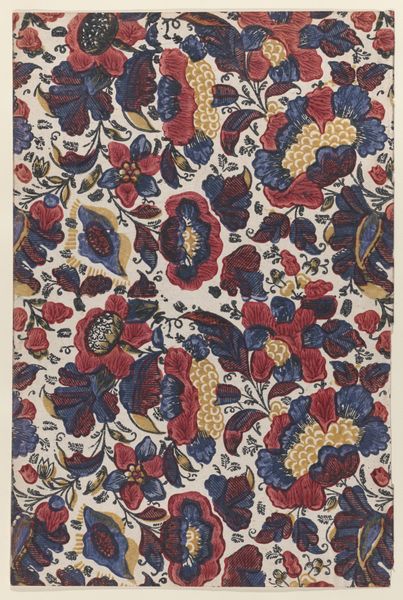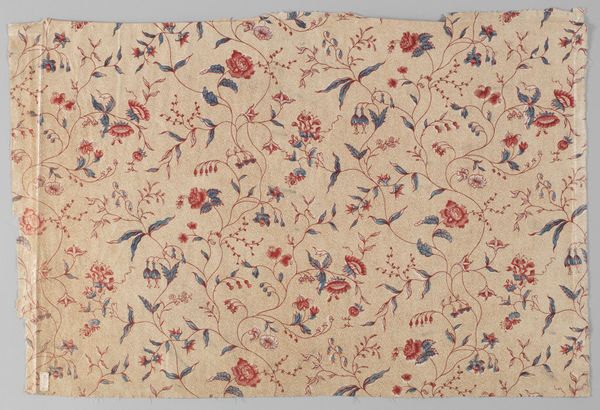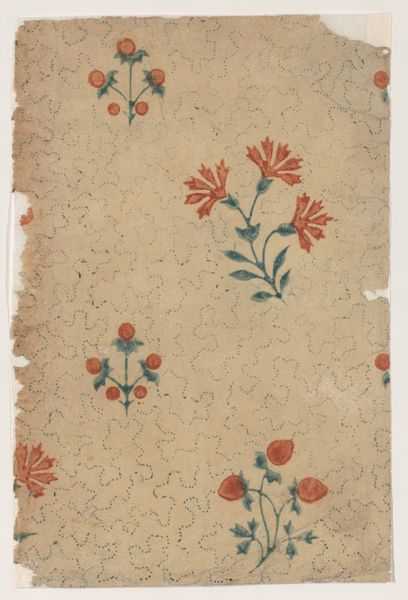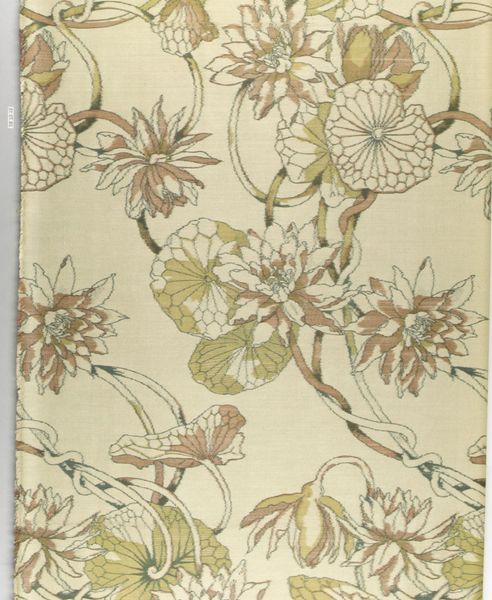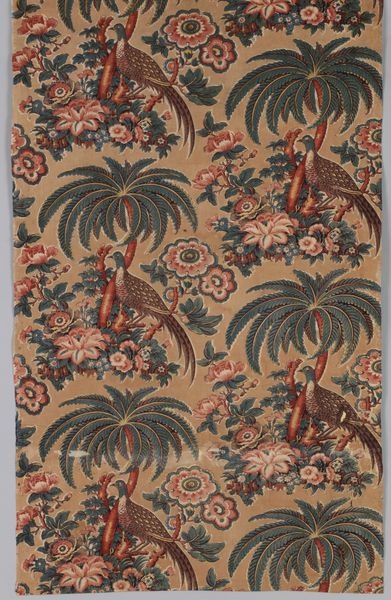
print, textile
# print
#
textile
#
romanticism
#
textile design
#
decorative-art
Dimensions: L. 26 x W. 29 inches 66.0 x 73.7 cm
Copyright: Public Domain
Editor: So this textile piece, simply titled "Piece," dates from 1831 to 1851. It’s at the Met, and the maker is listed as Stinton Bros. It has a real antique feel to it, quite charming. What strikes you when you look at it? Curator: What I see is the complex interplay of nature, industry, and social stratification in 19th-century textile production. This isn't just a pretty pattern. How was this fabric produced, and who had access to it? Was it hand-printed, machine-made? How did labor practices, possibly exploitative, feed the demand for these decorative arts among the emerging middle class? Editor: That's fascinating! I hadn't considered the labour element. I guess I just saw pretty flowers! But if we're talking about labour, who would have designed these textiles, and to what extent was that an anonymous industry? Were these pieces used to suggest elevated status or good taste? Curator: Precisely! Think about the circulation of botanical knowledge during that era. Designs like these, romanticized depictions of nature, are reflective of colonial trade networks, maybe even the appropriation of plant species from other regions of the world. Editor: Oh wow, so it’s tied to global power dynamics too! This completely changes how I view something as seemingly harmless as a floral pattern. Curator: Exactly. Art, even decorative art, never exists in a vacuum. Editor: It’s incredible how a textile can be a reflection of so many layers of history. I will never look at wallpaper the same way again! Curator: And that's the power of art history – to uncover those layers.
Comments
No comments
Be the first to comment and join the conversation on the ultimate creative platform.
